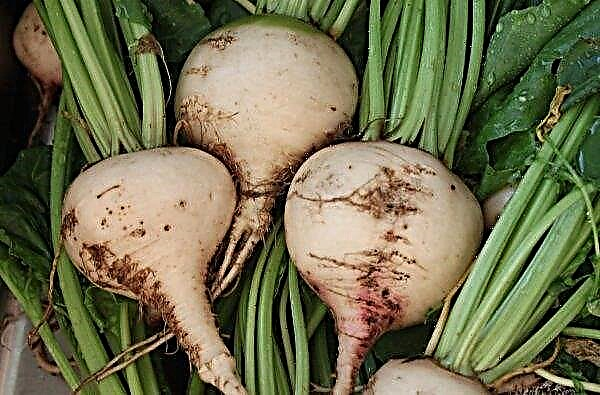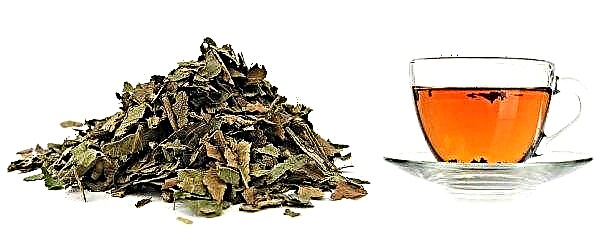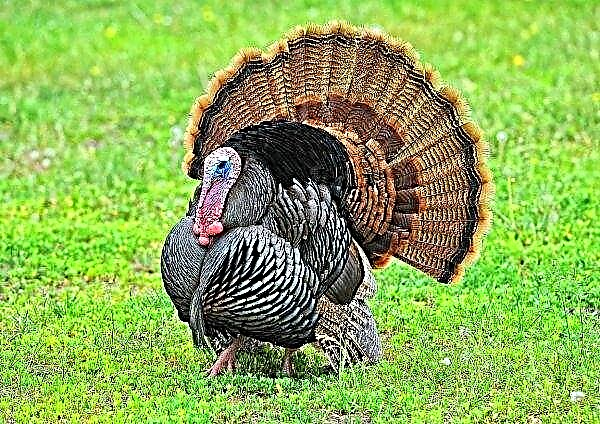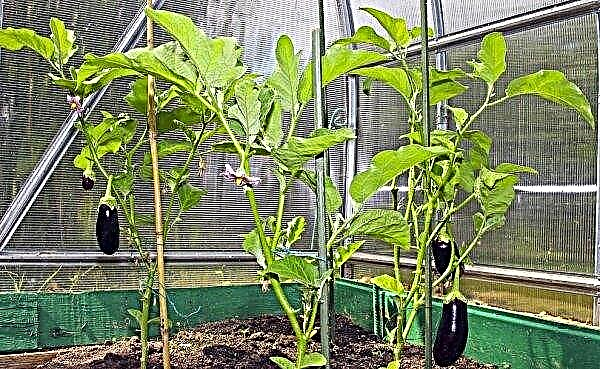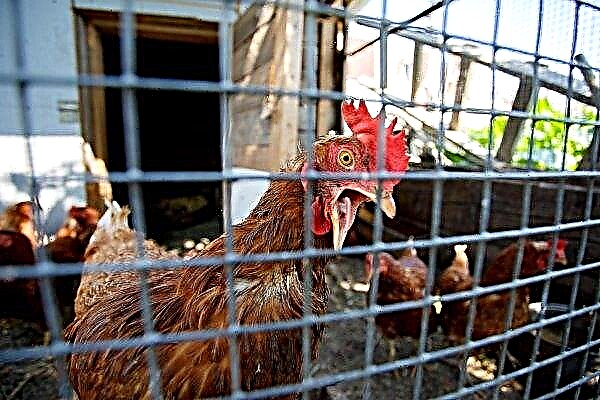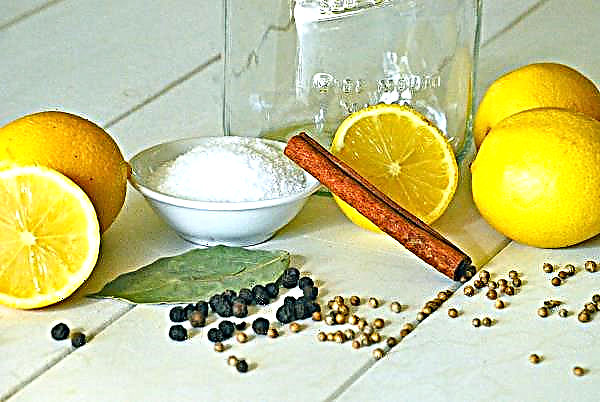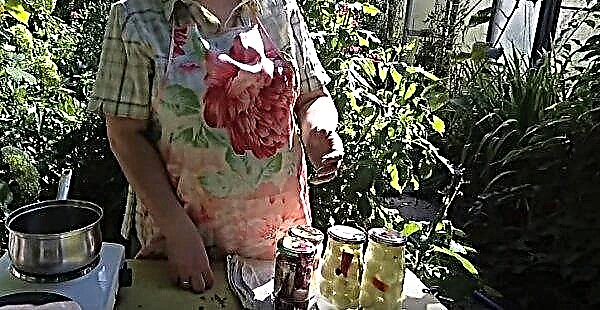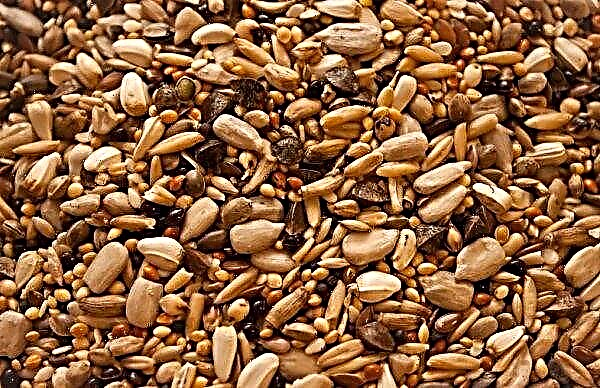The cultivation of plants in greenhouses and greenhouses allows you to increase the chances of more abundant and stable crops, early fruiting in any season. There are many models of insulation structures on the market with various characteristics, of various sizes and shapes. It is important to choose the right structure for those plants that you plan to grow. The article will talk about the greenhouse "Cucumber".
Features and description of the design of the greenhouse "Cucumber"
The greenhouse "Cucumber" is a simple design for growing garden and flower crops, seedlings, which consists of a frame (arcs and crossbars) and a dense film stretched over it. It allows you to protect cultivated plants from bad weather, sudden temperature jumps, heavy rainfall. When using a protective structure, you can get the first vegetables to the table in May.
The dimensions of the structure may vary, depending on the manufacturer. The most popular compact dimensions, which allow you to cover from 4.5 to 5 m² of soil area. The width and height of such structures is 1–1.15 m. Length - 4.5; 4.8; 5 m. The weight of the greenhouse disassembled is 12 kg. Shelter film is not included in the construction kit, it should be purchased separately. Recommended thickness is 150 microns.Did you know? The inhabitants of ancient Rome tried to cultivate plants in greenhouse conditions. And the prototypes of modern insulation structures were the botanical and winter gardens erected by Italians and Germans to grow exotic crops.
 Reinforced film has a longer life.
Reinforced film has a longer life.The frame of the greenhouse is made of galvanized profile. Closing and opening of the structure in order to ensure the influx of fresh air and remove the fruits occurs with the help of free rails.
The foundation for this design is not needed. The construction is established by fastening the crossbar and arcs in the form of an arch. T-shaped legs are attached to the ends of the arcs, which must be dug into the ground so that the structure can withstand gusts of wind.
 The greenhouse "Cucumber" is intended only for use in the warm season. In winter, the film must be removed from it, leaving only the frame.
The greenhouse "Cucumber" is intended only for use in the warm season. In winter, the film must be removed from it, leaving only the frame.
- The advantages of the greenhouse design "Cucumber" are:
- lack of need for foundation equipment;
- strength;
- ease;
- compactness;
- ease of use;
- reliability and durability of the frame;
- various types of plants can be grown;
- the ability to easily reinstall to another place;
- you can get earlier crops.
- Disadvantages:
- the shortcomings include the fragility of the covering material.
Important! To ensure that the structure is stable and does not wash out fertile soil, it is recommended to install it on a wooden frame.
How to make a greenhouse with your own hands
The greenhouse "Cucumber" can be purchased ready-made and assembled in just a couple of hours or made from scratch with your own hands, giving it the desired dimensions. To do this, you need to calculate the dimensions, create drawings, prepare the necessary materials and tools. The simplest low design in the presence of everything necessary can be assembled in half an hour to one person.
Dimensioning and drawing creation
When calculating the sizes, we recommend that you focus on the already tested and used by most manufacturers finished structures. Height can be about 100 cm. This is enough to grow plants with small stature, for which the greenhouse is intended. Width is better to do no more than a meter. The length of the structure can be different, depending on how much free space you have on the site and how many plants you are going to grow. Usually it varies from 3 to 8 m.
After determining the dimensions of the future structure, you should create its drawing, during which to think over the shape of the structure and the method of opening the top.
A standard drawing of an arched structure can be found in the photo: 
Selection of materials and tools
For the manufacture of the greenhouse, the procurement of the following materials and tools will be required:
- galvanizing (aluminum profile, plastic pipes with a diameter of 2 cm, fiberglass reinforcement with a diameter of 6 mm);
- wooden slats;
- nuts;
- bolts;
- clamps for fixing the film;
- screwdriver;
- screwdrivers;
- stapler.
Did you know? The largest greenhouse in the world is in the county of Cornwall (UK). It grows about 1 million plants brought from all over the world.
Choosing and preparing a place for installing a greenhouse
The key to obtaining a quality crop is the correct selection of a place for the installation of the greenhouse design. A number of requirements are put forward to him:
- good lighting;
- lack of drafts;
- lack of tall plants.
 In length, the greenhouse should be installed from west to east.
In length, the greenhouse should be installed from west to east.The site must be prepared accordingly:
- clean from turf, plant crops and residues, stones;
- level the ground with a rake;
- level the surface with a level.
 The greenhouse should have fertile soil.
The greenhouse should have fertile soil.The soil can be mixed from peat, humus, turf, sawdust (all in 1 part). You can also use a mixture of turf and lowland peat in a ratio of 1 to 3. The earth must necessarily be enriched with phosphorus, nitrogen and potassium. If the soil is too acidic, lime should be added to it.
Step-by-step instruction
If you plan to install a greenhouse on a wooden frame, then you need to start with the manufacture of the base:
- From wooden boards make 2 blanks corresponding to the length of the structure, and 2 blanks equal to its width.
- Bolt them together, forming a frame.
Next, proceed to assembling the frame from fiberglass reinforcement and attaching it to the frame.Important! The base should be bolted, since only they can provide rigidity. Nails and screws are unsuitable for this purpose.
Wireframing
To create a framework, you must:
- Make holes in a wooden frame with a diameter of 6–8 mm to install arcs with an interval of 50 cm.
- Insert one end of the valve into the hole on one side of the frame, bend it. Place the other end of the valve in the hole on the opposite side.
- Check that the arcs are firmly fixed.

Greenhouse Cladding
To skin the frame, the following steps must be performed:
- Cover the frame with a film so that its ends are in contact with a wooden frame.
- Attach the film to the frame using a stapler.
- Tuck the ends of the film under the frame, thus increasing the service life of the bars and protecting them from fungi and rot.

Fastening can also be done using rails and nylon threads, glazing beads. The latter option is more reliable, but longer. The ventilation of the made insulation construction is carried out by lifting one of its sides and installing it on a support.
Video: how to make a greenhouse from fiberglass reinforcement and film with your own hands
Comparison of greenhouses from different manufacturers
One of the varieties of the described greenhouse is "Cucumber Premium" from the company "Volia". In the form of covering material for it, spanbond is used, and the arcs are made of plastic. This design has several advantages over galvanized models:
- lower cost;
- pipes do not rust when in contact with soil and moisture;
- longer term of operation.
Among the models similar to the "Cucumber" one can note the greenhouse "Fazenda". Its peculiarity is that it is made of pipes made of HDPE and the covering material SUF 24, folds in the form of an accordion.
Another option that should be considered when choosing a greenhouse is a design from the company Dayas. As a covering material, they use a rayfenhauser. Arc made of HDPE or propylene arc. Airing is carried out by shifting the covering material along the arcs.
When reviewing the greenhouses you can not ignore the mini-greenhouse-greenhouse Comfort Garden. Its frame is made of frost-resistant pipe. It has the shape of a house covered with a durable reinforced cover. Airing occurs with the help of window leaves in the roof, which open and close with lightning.
Greenhouse crops
In a cucumber-type shelter, you can cultivate the following plants:
- cucumbers
- cabbage;
- Tomatoes
- radish;
- Strawberries
- carrot;
- wild strawberries;
- greenery;
- pepper;
- zucchini;
- flower crops.
 The greenhouse is great for growing seedlings, protecting it from adverse weather conditions and pests.
The greenhouse is great for growing seedlings, protecting it from adverse weather conditions and pests.
Greenhouse "Cucumber" is popular among gardeners involved in the cultivation of vegetables and flowers, due to its compactness and ease of operation. It can be purchased ready-made or made yourself. The latter option, as a rule, is cheaper.

